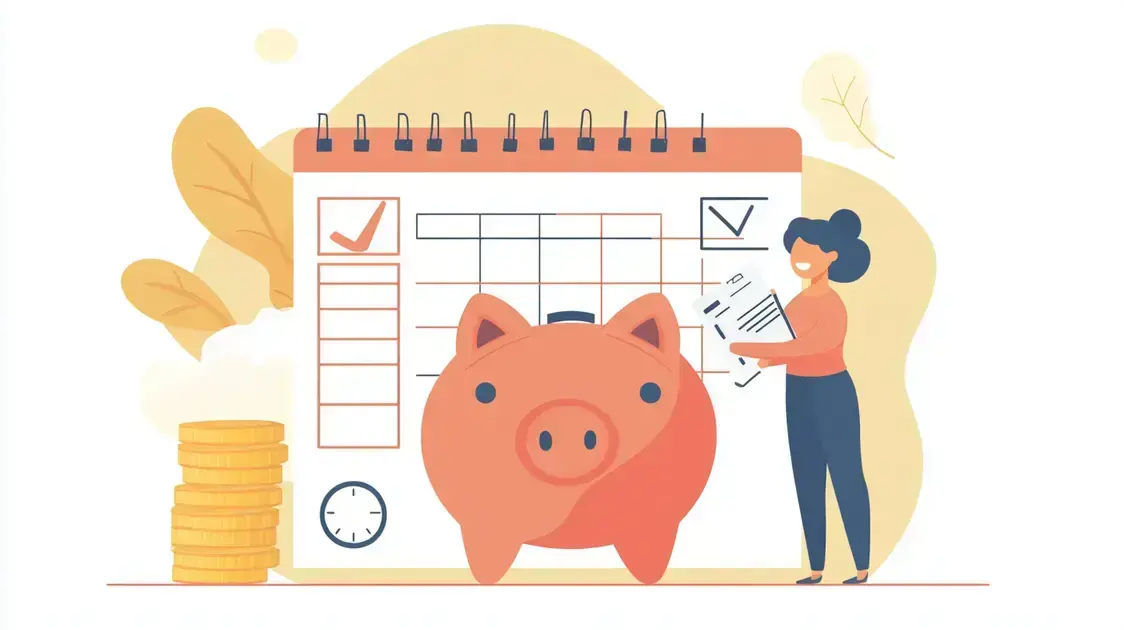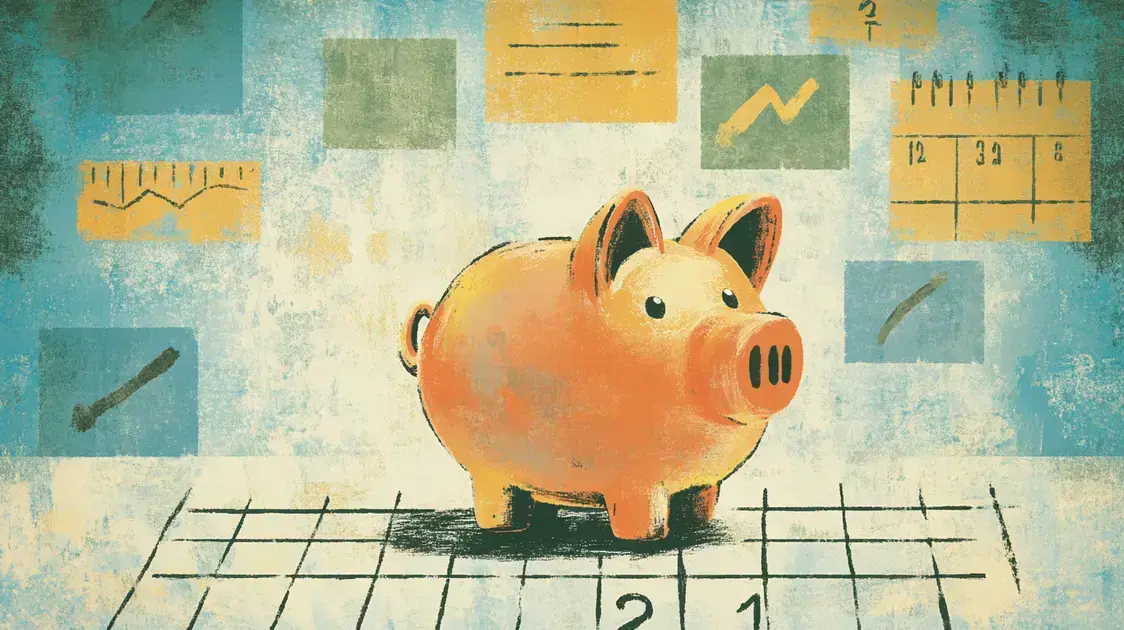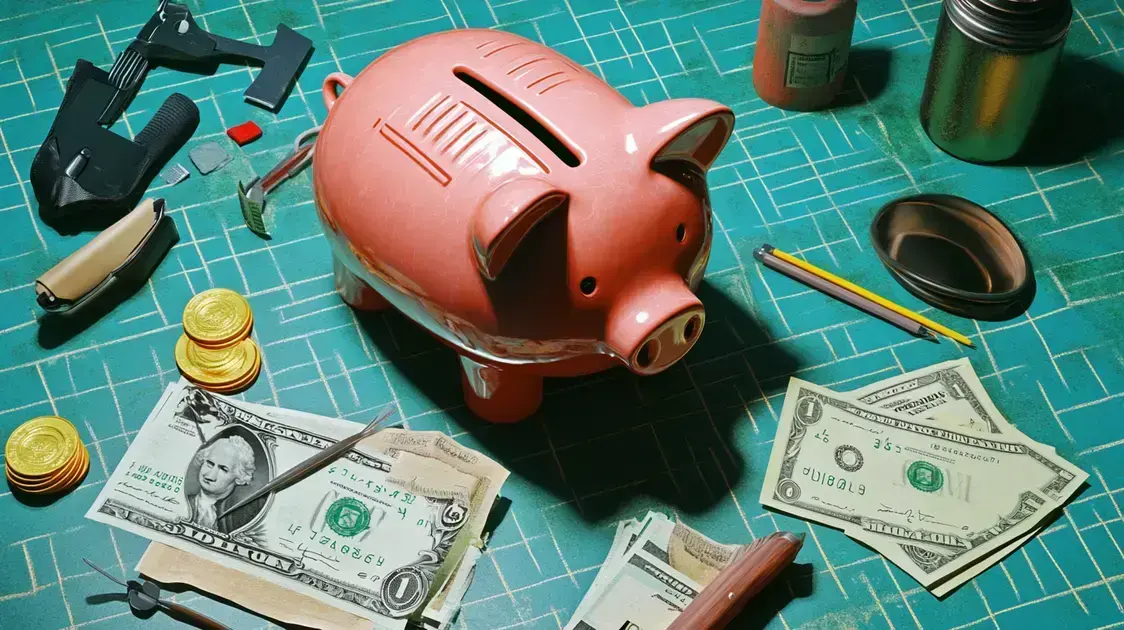An emergency fund is an essential financial safety net, designed to cover unexpected expenses such as medical emergencies, job loss, or urgent repairs. Without one, a sudden financial setback can lead to debt or financial strain, making it harder to recover.
Experts recommend saving three to six months’ worth of living expenses in a secure, easily accessible account. This ensures you have the funds available when needed, without relying on credit cards or loans. Choosing the right account is crucial to keeping your money safe while allowing quick access.
Building an emergency fund takes time and discipline, but the financial peace of mind it provides is invaluable. Whether you’re starting from scratch or looking to strengthen your savings, continue reading for practical steps to create a solid emergency fund.
Understanding Emergency Fund Planning
Emergency fund planning is vital for navigating life’s unpredictability. This planning process helps you create a financial buffer that can cover unexpected expenses such as medical bills, car repairs, or sudden job loss. An emergency fund ensures you don’t have to rely on credit or loans, which can lead to financial stress.
What is an Emergency Fund?
An emergency fund is a savings account specifically set aside for unforeseen events. Ideally, you should aim to save three to six months’ worth of living expenses in this fund. This amount offers a cushion during tough times, helping you focus on recovery instead of worrying about finances.
Why is Emergency Fund Planning Important?
Understanding the importance of an emergency fund can change the way you approach your finances. It provides peace of mind and a sense of security that you are prepared for whatever life throws your way. With a solid emergency fund, you can handle expenses without derailing your financial goals.
Starting Your Planning Process
Begin your emergency fund planning by evaluating your monthly expenses. Categorise your spending to determine how much money you need to save. Once you have a clear target, set up a dedicated savings account to keep your emergency funds separate from your regular finances.
Finally, commit to making regular deposits into your emergency fund. Treat it like a recurring bill to instil consistent savings habits. By understanding emergency fund planning, you are laying the groundwork for a more secure financial future.
The Importance of an Emergency Fund

The importance of Emergency Fund Planning cannot be overstated. It serves as your financial safety net, offering peace of mind when unexpected expenses arise. Life is unpredictable, and having an emergency fund can make all the difference in managing financial stress.
Protection from Financial Stress
An Emergency Fund Planning strategy provides immediate support during times of crisis, such as job loss, medical emergencies, or urgent home repairs. Without it, you may have to rely on credit cards or loans, which can lead to debt and increased stress.
Confidence in Financial Decisions
When you prioritize Emergency Fund Planning, you can make choices without the cloud of financial worry. This confidence can allow you to pursue opportunities like new jobs or education, knowing you have a buffer in place.
A Safety Net for Your Family
For families, Emergency Fund Planning is even more crucial, as it helps secure the financial well-being of all members. Having this fund means you can respond swiftly to crises, protecting your loved ones from potential harm.
Promotes Healthy Financial Habits
Building an emergency fund through Emergency Fund Planning instills good financial habits. It encourages regular savings, budget monitoring, and prioritizing financial goals. These habits can extend to other areas of your financial life, fostering overall stability.
Ultimately, the importance of Emergency Fund Planning lies in its role as a tool for financial empowerment. It allows you to navigate life’s challenges confidently, making it a fundamental aspect of personal finance.
How Much Should You Save?
When considering how much should you save for your emergency fund, a common recommendation is to aim for three to six months’ worth of living expenses. To determine this amount, start by evaluating your monthly costs, which should include housing, utilities, food, healthcare, and any debt repayments.
Calculating Your Monthly Expenses
Begin by listing all your necessary expenses each month. Include fixed costs such as rent or mortgage payments, and variable costs like groceries and transportation. This will give you a clear picture of your essential spending.
Saving for Different Life Stages
Depending on your life situation, the amount you save may vary. For example, single individuals may find that three months of expenses suffices, while families or homeowners may want to aim for six months or more due to added responsibilities.
Income Stability and Job Security
Consider your job stability when deciding how much to save. If you work in a field with frequent layoffs or your income fluctuates, it’s wise to save more. A larger fund provides extra security during uncertain times.
Assessing Your Needs
Ultimately, think about your personal circumstances. Are you planning on significant life changes? If so, setting aside extra funds might be a suitable choice. Adjust your goal based on what feels right for your unique financial situation.
Having a clear savings goal helps simplify your emergency fund planning. Regularly assess your fund to ensure it aligns with your current needs as changes in your life may require adjustments to your savings strategy.
Building Your Emergency Fund

Building your emergency fund is an essential step towards financial security. This process involves setting aside money specifically for unexpected expenses. Here are some effective strategies to help you build your fund successfully.
Start with a Plan
The first step in building your emergency fund is to create a clear plan. Determine how much you want to save and by when you wish to achieve that goal. Break down your target into manageable monthly contributions to make it easier to reach your goal.
Set Up Automatic Savings
One of the most effective ways to build your emergency fund is by setting up automated transfers from your checking account to your savings account. This “paying yourself first” method ensures that you consistently save money without having to think about it.
Utilise Windfalls and Bonuses
Whenever you receive unexpected income, like tax refunds, bonuses, or gifts, consider putting a portion of that money into your emergency fund. This can significantly boost your savings and help you reach your goal faster.
Cut Unnecessary Expenses
Review your monthly spending habits and identify areas where you can cut back. Reduce dining out, subscription services, or impulse purchases. The money saved can be redirected into your emergency fund to help it grow quicker.
Monitor Your Progress
Keep track of your savings to stay motivated. Regularly review your emergency fund balance and celebrate small milestones along your journey. This will encourage you to remain focused on your financial goal.
Remember, building your emergency fund takes time and discipline. Stick to your plan, remain committed, and soon you will have a sturdy financial cushion to rely on during unforeseen circumstances.
Where to Keep Your Emergency Fund
Emergency Fund Planning is essential for ensuring your savings are both safe and accessible when unexpected expenses arise. Choosing the right place to store your emergency fund can make a significant difference in how effectively you manage financial setbacks. Here are some options to consider.
A high-interest savings account is one of the best places to keep your emergency fund. These accounts offer better interest rates than standard savings accounts, allowing your money to grow over time while still being easily accessible when needed. Money market accounts also provide a solid option, offering slightly higher interest rates along with check-writing privileges, making them a flexible choice for Emergency Fund Planning.
If you’re comfortable locking in your savings for a set period, a Certificate of Deposit (CD) can yield higher interest rates, though early withdrawals may result in penalties. A regular savings account remains a safe and familiar option with easy access. Prioritizing accessibility and security is key—Emergency Fund Planning ensures your funds are ready when needed.
Tips for Maintaining Your Fund

Maintaining your emergency fund is important to ensure it continues to serve its purpose. Here are some tips for maintaining your fund effectively.
Regularly Review Your Fund
Check your emergency fund balance and contributions at least every few months. This helps you stay aware of your savings progress and make any necessary adjustments to your contributions based on changes in your financial situation.
Set Up Automatic Contributions
To encourage consistent saving, consider setting up automatic contributions from your paycheck or bank account into your emergency fund. This ensures you are regularly adding to your fund without having to think about it.
Adjust for Inflation
As time goes on, your emergency fund should keep up with inflation. Review the amount you have saved compared to your current living expenses. If necessary, increase your savings goal to ensure your fund remains adequate for potential future expenses.
Avoid Unnecessary Withdrawals
Only use your emergency fund for genuine emergencies, such as unexpected medical bills or car repairs. Making non-emergency withdrawals will reduce your savings and may leave you unprepared for future unexpected events.
Build Up Gradually
Start with a small target and gradually increase your fund over time. If you initially set a goal to save three months’ worth of expenses, aim to extend it to six months once you reach that target. This allows you to build a more robust safety net.
By following these tips, you can keep your emergency fund healthy and ensure it remains a reliable resource during challenging times.
When to Use Your Emergency Fund
Emergency Fund Planning is essential for financial stability, especially when deciding when to use your savings. This fund should only be reserved for true emergencies that disrupt your life unexpectedly. Knowing when to tap into it can prevent unnecessary financial stress and keep you on track.
Unexpected medical expenses, such as emergency room visits or surgeries, are a valid reason to use your emergency fund. Health issues can arise at any time, and having funds set aside can relieve the financial burden. Losing your job or experiencing a significant income reduction is another situation where this fund becomes crucial, helping you cover essential expenses while you seek new employment.
Major car repairs that affect your ability to commute, unexpected home repairs like a leaking roof, and urgent family emergencies may also require you to access your savings. Emergency Fund Planning ensures that you use your money wisely and only for situations that truly require it. By making informed decisions, you can maintain financial security and be prepared for life’s unexpected challenges.
FAQ – Frequently Asked Questions About Emergency Fund Planning
What is an emergency fund?
An emergency fund is a savings account set aside specifically for unexpected expenses such as medical emergencies, car repairs, or job loss.
How much should I save in my emergency fund?
You should aim to save three to six months’ worth of living expenses to ensure sufficient coverage during emergencies.
Where should I keep my emergency fund?
It’s best to keep your emergency fund in a high-interest savings account or a money market account for easy access and growth.
When should I use my emergency fund?
You should use your emergency fund for true emergencies such as unexpected medical expenses, job loss, major car repairs, or urgent home repairs.
How can I build my emergency fund?
Start by creating a plan, setting up automatic savings, utilising unexpected income, and cutting unnecessary expenses to increase your savings.
What are some tips for maintaining my emergency fund?
Regularly review your fund, set up automatic contributions, adjust for inflation, avoid unnecessary withdrawals, and build up gradually.
Check out our article on Real Estate Investment to learn how to build wealth through property and make informed investment decisions.
